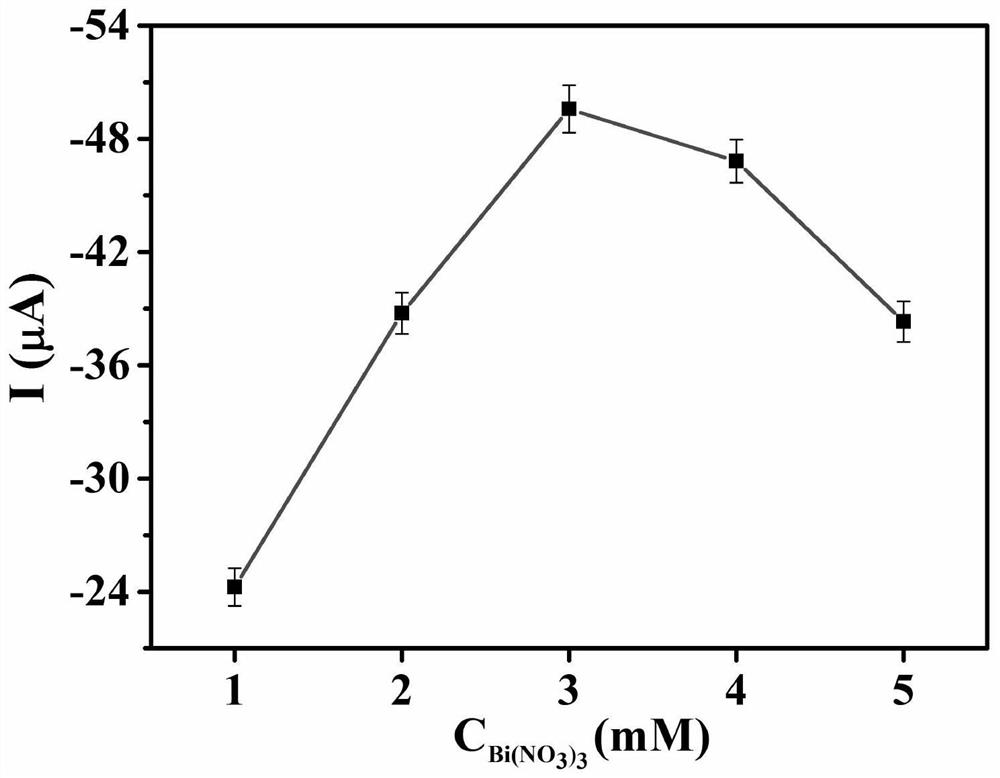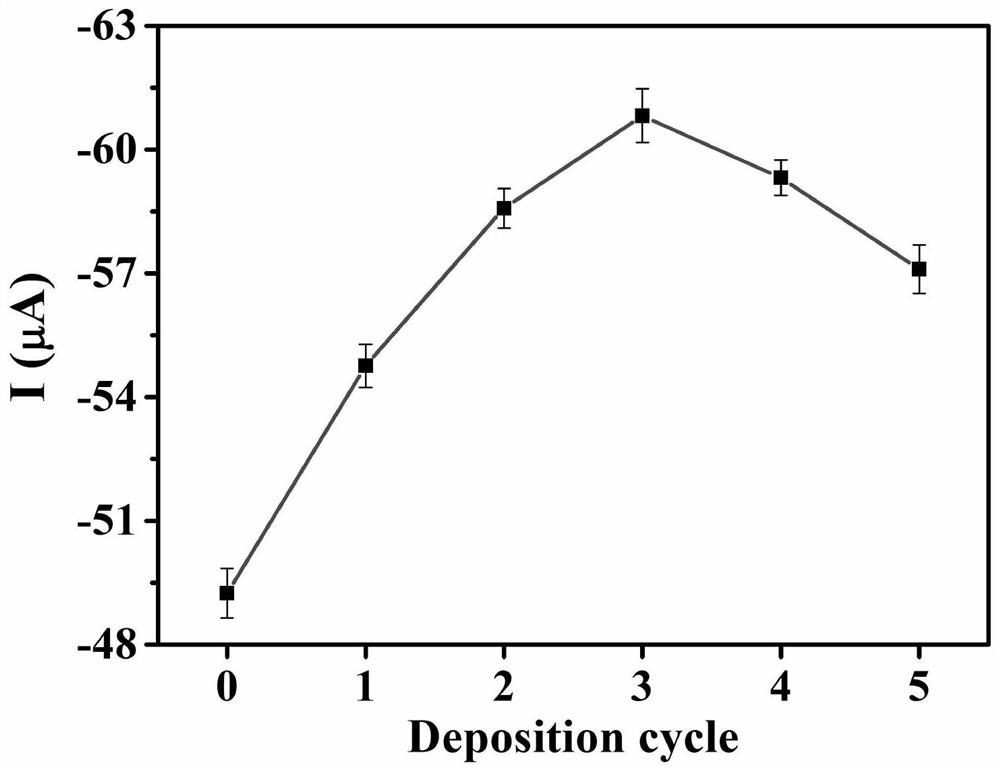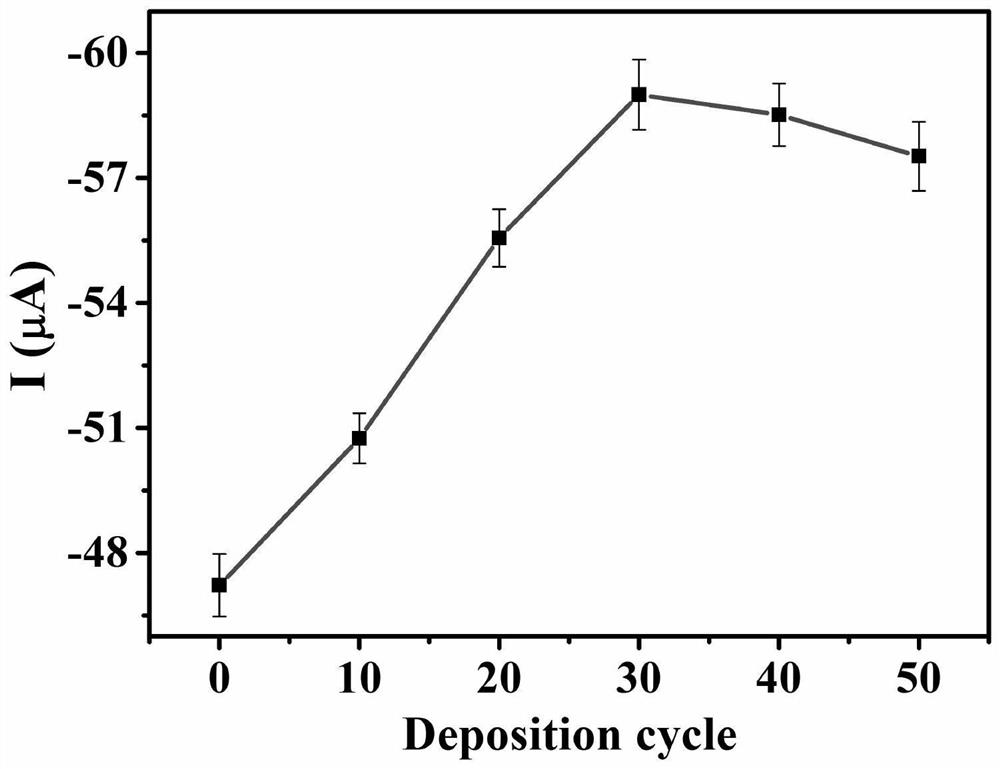Photoelectrochemical aptamer sensor based on sensing separation strategy and preparation method and application of photoelectrochemical aptamer sensor
An aptamer sensor and photoelectrochemical technology, applied in the field of biosensors, can solve problems such as poor sensitivity and weak photoelectric response, achieve high photoelectric signal, simple preparation method, and improve the effect of photocurrent response
- Summary
- Abstract
- Description
- Claims
- Application Information
AI Technical Summary
Problems solved by technology
Method used
Image
Examples
Embodiment 1
[0066] Due to PEDOT / Bi 2 S 3 The photocurrent output of the / ZnO photoanode has an important influence on the detection sensitivity of the final prepared photoelectrochemical aptasensor, so the following is for PEDOT / Bi 2 S 3 / ZnO photoanode preparation process parameters were optimized:
[0067] 1) Due to Bi(NO 3 ) 3 Concentration of ethylene glycol solution versus Bi 2 S 3 The morphology and thickness of the nanosheets have an influence, so the Bi(NO 3 ) 3 The concentration of the ethylene glycol solution is optimized as follows:
[0068] Prepare ethylene glycol solution (25mL) with a concentration of 4.5mM thiourea and different concentrations of Bi(NO 3 ) 3 Ethylene glycol solution (25mL), wherein, the Bi(NO 3 ) 3 The concentration of the ethylene glycol solution is 1mM, 2mM, 3mM, 4mM and 5mM; then the above two solutions are added to 150ml of ethanol and stirred until the mixed solution is clear; then the prepared solution is added to 100ml of Teflon In the lin...
Embodiment 2
[0074] Since the electron transport ability and probe modification amount of the sensing cathode have a significant impact on the detection sensitivity and quantitative detection range of the final prepared photoelectrochemical aptasensor, the following process parameters for the preparation of the sensing cathode were optimized:
[0075] 1) Because the modification amount of RGO on the sensing cathode has a significant impact on the electron transport ability of the cathode, the preparation process parameters of the deposited RGO were optimized, as follows:
[0076] Using cyclic voltammetry (CV), the concentration of graphene oxide solution used for electrodeposition was 0.8mg / mL, the voltage was set between -1.3V and 0.6V, the scanning speed was set at 0.1V / s, and the cycle was different. After performing 10, 20, 30, 40, and 50 cycles respectively, RGO / ITO electrodes with different modification amounts were obtained.
[0077] It can be obtained by carrying out the photocurre...
experiment example 1
[0086] (1) Preparation of ZnO nanorod modified electrode, the specific preparation steps are as follows:
[0087] Conduct electrodeposition in an aqueous solution containing 6.3mM zinc nitrate and 6.3mM hexamethylenetetramine. During electrodeposition, keep the solution temperature at 80°C and the deposition potential at 1.0V; then remove the substrate from the solution and use deionized Rinse with water and blow dry with nitrogen.
[0088] Among them, the scanning electron microscope as attached Figure 5 As shown, a large number of uniform ZnO nanorods are arranged in a columnar shape with an average diameter of 80-90 nm.
[0089] (2) Bi 2 S 3 / ZnO modified electrode preparation, the specific preparation steps are as follows:
[0090] Prepare a solution of 4.5mM thiourea in ethylene glycol (25mL) and a concentration of 3.0mM Bi(NO 3 ) 3 ethylene glycol solution (25mL); then the above two solutions were added to 150 milliliters of ethanol and stirred until the mixed sol...
PUM
 Login to View More
Login to View More Abstract
Description
Claims
Application Information
 Login to View More
Login to View More - R&D
- Intellectual Property
- Life Sciences
- Materials
- Tech Scout
- Unparalleled Data Quality
- Higher Quality Content
- 60% Fewer Hallucinations
Browse by: Latest US Patents, China's latest patents, Technical Efficacy Thesaurus, Application Domain, Technology Topic, Popular Technical Reports.
© 2025 PatSnap. All rights reserved.Legal|Privacy policy|Modern Slavery Act Transparency Statement|Sitemap|About US| Contact US: help@patsnap.com



